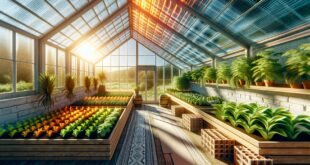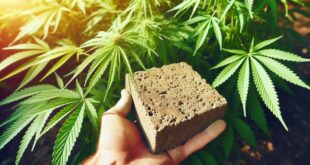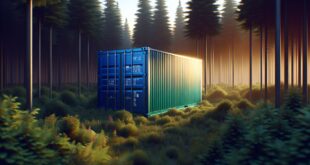 Beneath the towering skyscrapers and amidst the rhythmic hum of city life, a diverse tapestry of edible plants awaits those who know where to look. Urban foraging, a practice as old as humanity itself, unveils a hidden bounty right in the heart of bustling cities. You’d be amazed by the variety of wild foods quietly thriving in parks, along sidewalks, and even in forgotten alleyways. These resilient plants whisper stories of nature’s perseverance and offer a feast for those willing to listen.
Beneath the towering skyscrapers and amidst the rhythmic hum of city life, a diverse tapestry of edible plants awaits those who know where to look. Urban foraging, a practice as old as humanity itself, unveils a hidden bounty right in the heart of bustling cities. You’d be amazed by the variety of wild foods quietly thriving in parks, along sidewalks, and even in forgotten alleyways. These resilient plants whisper stories of nature’s perseverance and offer a feast for those willing to listen.
Let’s start with the humble dandelion. Often dismissed as a pesky weed, this plant is actually a nutritional powerhouse. Its young leaves bring a peppery kick to salads, while the bright yellow flowers can be transformed into everything from wine to fritters. Plus, the roots, when roasted, make a coffee substitute that’s been cherished for centuries. Isn’t it intriguing how something so common could be so versatile and delicious?
Next up, the tenacious plantain (not to be confused with the banana-like fruit) is a tough little survivor, often found sprouting through cracks in the pavement. This plant’s leaves boast anti-inflammatory properties and can be made into a soothing tea or used as a green similar to spinach. Imagine the wonder in discovering such a potent remedy at your feet—truly a testament to nature’s generosity.
Then there’s the wild garlic, or ramsons, with its unmistakable garlicky aroma. Along riverbanks and shady city corners, these lush green leaves announce the arrival of spring. Use them to perk up pesto or add a punch to sandwiches. There’s something almost poetic about foraging for this wild food while buildings stand tall around you.
Don’t overlook the elder tree, whose blossoms can turn ordinary sugar into fragrant elderflower cordial, a delightful reminder that even in the concrete jungle, sweetness abounds. Later in the year, those same trees offer clusters of small dark berries, ripe for jams, syrups, and medicinal remedies.
These plants, alongside wood sorrel with its refreshing lemony tang, ground elder acting as a parsley stand-in, and the ubiquitous nettle—perfect for soups and nutrient-rich teas—are just a snippet of what’s out there. Urban foraging transforms city survival into a culinary adventure, reconnecting us with nature’s seasonal gifts.
As Ralph Waldo Emerson once said, “Adopt the pace of nature: her secret is patience.” Through patience and observation, urban foragers reclaim a connection to the earth that is often lost in city life. Armed with knowledge, a touch of curiosity, and reverence for what the land offers, anyone can become a successful forager. After all, isn’t there something inherently liberating about gathering your own food—a gentle rebellion against the convenience of modern supermarkets?
If you’re ready to embark on this flavorful journey, remember that it’s also about respecting the cycles of growth and protecting these green treasures for future generations. For those who seek a more conscious path, urban foraging might just be the key to rediscovering what it means to truly nourish ourselves and our communities. As you step out into the urban wilderness, let nature’s secrets unfold at your fingertips, enriching not only your palate but your spirit as well.
Safety tips for urban foraging
Before you set out on your urban foraging adventure, it’s essential to consider safety, both for yourself and the plants you wish to harvest. While city survival can become a culinary thrill, it’s not without its pitfalls. Wild food, after all, must be treated with the same respect and caution as the cultivated kind. So, what’s the secret to a successful harvest in the urban landscape?
First and foremost, never consume any plant unless you’re 100% sure of its identity. It might seem elementary, but misidentification is one of the most common mistakes newbie foragers make. Start by cross-referencing with several trusted sources before sampling your find. There are handy apps like “Seek” by iNaturalist that can be invaluable in giving you that confidence. But remember, nothing beats the wisdom of a seasoned forager or a good field guide. When in doubt, leave it out.
Now, onto Mother Nature’s free banquet—it’s critical to be aware of the environment in which your wild food grows. Avoid plants growing near busy roads or industrial areas where pollution might have tainted them. The allure of that vibrantly colored berry might not be worth the risk of contamination from exhaust fumes or runoff. Instead, frequent community gardens, local parks, or other maintained spaces with cleaner air and soil. It’s not just about what you’re putting into your body, but also how it’s been grown.
And while we’re talking safety, let’s not forget about potential allergies. Like any new food, always try a small amount first and wait to see if your body reacts. Urban foraging shouldn’t just satisfy the stomach but should harmonize with your wellbeing.
Interestingly, urban foraging brings more than just food safety concerns. There’s a legal aspect to consider as well. In many areas, foraging isn’t just a gray zone; it might be outright restricted. Check your city’s regulations because what might feel like a harmless picking session could contravene local laws. In cases where city laws are murky, some find solace in Edgar Watson Howe’s words, “Consider this: it doesn’t matter what we do, until we accept responsibility for what we do.”
Lastly, carry the right gear. A simple woven basket or fabric bag allows plants to breathe, unlike plastic bags that can cause them to wilt quickly. A small knife or scissors can also help ensure clean cuts that do less damage to plants than pulling or tearing. Besides, they can double up as handy tools if you need to cut through tougher stems or roots.
As you wander through the urban jungle, keep these tips close to heart. Respect the green spaces, nurture your sense of curiosity, and you’ll find a wealth of edible treasures that offer more than just nourishment—they’re a step towards a more conscious existence.
Sustainable foraging practices
 Urban foraging, as exhilarating as it may be, calls for a thoughtful approach to ensure that the activity benefits both the forager and the environment. Sustainability in this context isn’t just about preserving the greenery we gather from; it’s about cultivating a mindset that values balance and respects the rhythms of our natural world. The art of foraging becomes most rewarding when we learn to dance with nature, treading lightly as we partake in its offerings.
Urban foraging, as exhilarating as it may be, calls for a thoughtful approach to ensure that the activity benefits both the forager and the environment. Sustainability in this context isn’t just about preserving the greenery we gather from; it’s about cultivating a mindset that values balance and respects the rhythms of our natural world. The art of foraging becomes most rewarding when we learn to dance with nature, treading lightly as we partake in its offerings.
You might wonder how a simple act of gathering wild food can impact a bustling city. Here’s the thing: if each of us takes more than our fair share or disrupts ecosystems, it can throw the delicate urban ecological balance off-kilter. With this in mind, adopting a sustainable mindset is key. What does that look like? It starts with embracing the idea of moderation. When foraging, collect only what you need and leave enough for plants to regenerate, ensuring future availability not just for yourself but for other foragers and the wildlife that depends on them. Imagine it like a potluck where everyone contributes and shares—no single person hoards all the dessert.
Timing is another vital consideration. Harvesting too early can deprive a plant of the opportunity to seed and continue its life cycle. Observing a plant’s growing season not only enhances your understanding of nature’s timeline but also allows you to gather at the peak of flavor and nutrition. Tune into that seasonality; let it guide your foraging adventures.
But sustainability doesn’t mean you can’t enjoy the bounties of city survival. Mix your urban foraging with a touch of creativity. Finding innovative ways to use the entirety of a plant—roots, stems, leaves, and seeds—means you’re maximizing every ounce of effort and reducing waste. It’s akin to portfolio diversity in finance; the more ways you have to use something, the more valuable it becomes. Inspirational figures like Masanobu Fukuoka have noted, “The ultimate goal of farming is not the growing of crops, but the cultivation and perfection of human beings.” This ethos extends seamlessly to our foraging practices, encouraging us to grow as mindful custodians.
Alongside these practices, consider sharing your knowledge and bounty with others. Educating friends or community groups about sustainable foraging can create a ripple effect, promoting stewardship and respect for green spaces around us. As the saying goes, “Knowledge is power,” yet it’s even more potent when shared. This community spirit strengthens the interconnected web we all belong to, breathing life into cities that crave both innovation and tradition.
Remember, sustainable urban foraging isn’t just about adopting new habits; it’s about fostering a connection that honors the interdependence of all living things. By acknowledging and respecting this relationship, you join a lineage of seekers who view foraging not merely as an act of consumption but as a step towards enlightened living—a return to roots in every sense. As you nurture this relationship, watch as it gives depth and meaning to your role within the grand, vibrant tapestry of urban life.
 DS Haven In Light Of Things
DS Haven In Light Of Things





